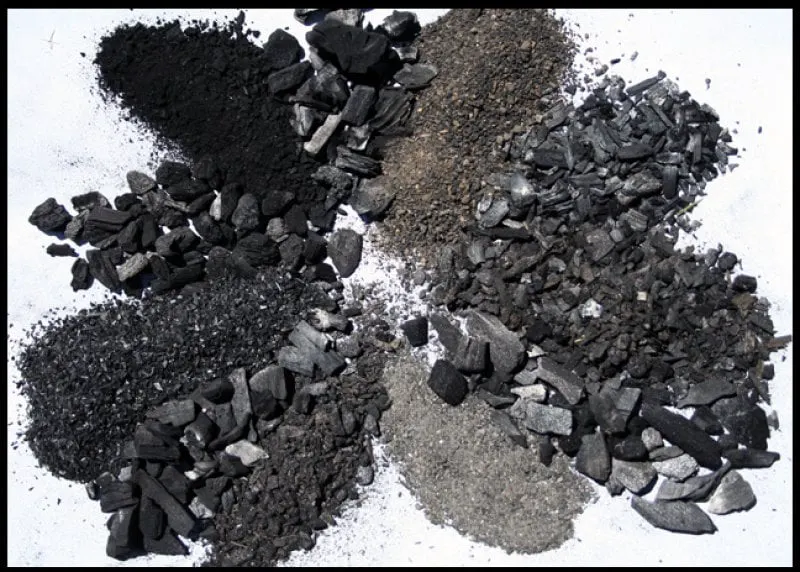Human poop as crop fertilizer? Recycled waste may boost yields, cut groundwater contamination
Human poop as crop fertilizer? Recycled waste may boost yields, cut groundwater contamination


Researchers from Cornell University’s College of Agriculture and Life Sciences and the Canadian Light Source (CLS) at the University of Saskatchewan have proven it is possible to create nitrogen-rich fertilizer by combining the solid and liquid components of human waste. The discovery, published recently in the journal Sustainable Chemistry and Engineering, has the potential to increase agriculture yields in developing countries and reduce contamination of groundwater caused by nitrogen runoff.
Special separating toilets that were developed through the Reinvent the Toilet Challenge have helped solve long-standing sanitation problems in the slums of Nairobi, Kenya. However, the methods used to dispose of the two outputs failed to capture a key nutrient that local fields were starving for: nitrogen.
Cornell researchers Leilah Krounbi, a former PhD student, now at the Weizmann Institute in Israel, and Johannes Lehmann, senior author and professor of soil and crop sciences, wondered whether it might be possible to close the waste stream loop by recycling nitrogen from the urine, which was otherwise being lost to runoff. While other researchers have engineered adsorbers using high-tech ingredients such as carbon nanotubes or activated carbons, Lehmann and his team wanted to know if they could do so with decidedly low-tech materials like human feces. Adsorbers are materials whose surfaces can capture and hold gas or liquids.
…
The researchers began by heating the solid component of human waste to 500 degrees Celsius in the absence of oxygen to produce a pathogen-free charcoal called biochar. Next, they manipulated the surface of the biochar by priming it with CO2, which enabled it to soak up ammonia, the nitrogen-rich gas given off by urine. The chemical process caused the ammonia to bond to the biochar. By repeating the process, they could load up the biochar with extra layers of nitrogen. The result is a solid material rich in nitrogen.
Using the SGM beamline at the CLS enabled Lehmann and his team to see how the chemistry in the nitrogen changed as it adsorbed ammonia. The beamline also provided an indication of just how available the nitrogen would be to plants if the resulting material was used as fertilizer.
…
The research team has demonstrated that it is indeed possible to make a fertilizer using the most basic of ingredients, human waste. However, they still have a number of questions to answer: Can you optimize the process to maximize the amount of ammonia soaked up by biochar? How will this “recycled” fertilizer compare to existing commercial nitrogen fertilizers for different crops and soils? Can you build a cost-effective machine that performs this process automatically in a real-world setting?
Read the original post

 | Videos | More... |

Video: Nuclear energy will destroy us? Global warming is an existential threat? Chemicals are massacring bees? Donate to the Green Industrial Complex!
 | Bees & Pollinators | More... |

GLP podcast: Science journalism is a mess. Here’s how to fix it

Mosquito massacre: Can we safely tackle malaria with a CRISPR gene drive?

Are we facing an ‘Insect Apocalypse’ caused by ‘intensive, industrial’ farming and agricultural chemicals? The media say yes; Science says ‘no’
 | Infographics | More... |

Infographic: Global regulatory and health research agencies on whether glyphosate causes cancer
 | GMO FAQs | More... |

Why is there controversy over GMO foods but not GMO drugs?

How are GMOs labeled around the world?

How does genetic engineering differ from conventional breeding?
 | GLP Profiles | More... |

Alex Jones: Right-wing conspiracy theorist stokes fear of GMOs, pesticides to sell ‘health supplements’




 California, Washington, Oregon forge immunization alliance to safeguard vaccine access against federal undermining
California, Washington, Oregon forge immunization alliance to safeguard vaccine access against federal undermining Trust issues: What happens when therapists use ChatGPT?
Trust issues: What happens when therapists use ChatGPT? Fighting deforestation with CO2: Biotechnology breakthrough creates sustainable palm oil alternative for cosmetics
Fighting deforestation with CO2: Biotechnology breakthrough creates sustainable palm oil alternative for cosmetics Viewpoint — Fact checking MAHA mythmakers: How wellness influencers and RFK, Jr. undermine American science and health
Viewpoint — Fact checking MAHA mythmakers: How wellness influencers and RFK, Jr. undermine American science and health 30-year-old tomato line shows genetic resistance to devastating virus
30-year-old tomato line shows genetic resistance to devastating virus The free-range chicken dilemma: Better for birds, but with substantial costs
The free-range chicken dilemma: Better for birds, but with substantial costs Viewpoint: Video — Big Solar is gobbling up productive agricultural land and hurting farmers yet providing little energy or sustainabilty gains
Viewpoint: Video — Big Solar is gobbling up productive agricultural land and hurting farmers yet providing little energy or sustainabilty gains ‘You have to treat the brain first’:Rethinking chronic pain with Sanjay Gupta
‘You have to treat the brain first’:Rethinking chronic pain with Sanjay Gupta
